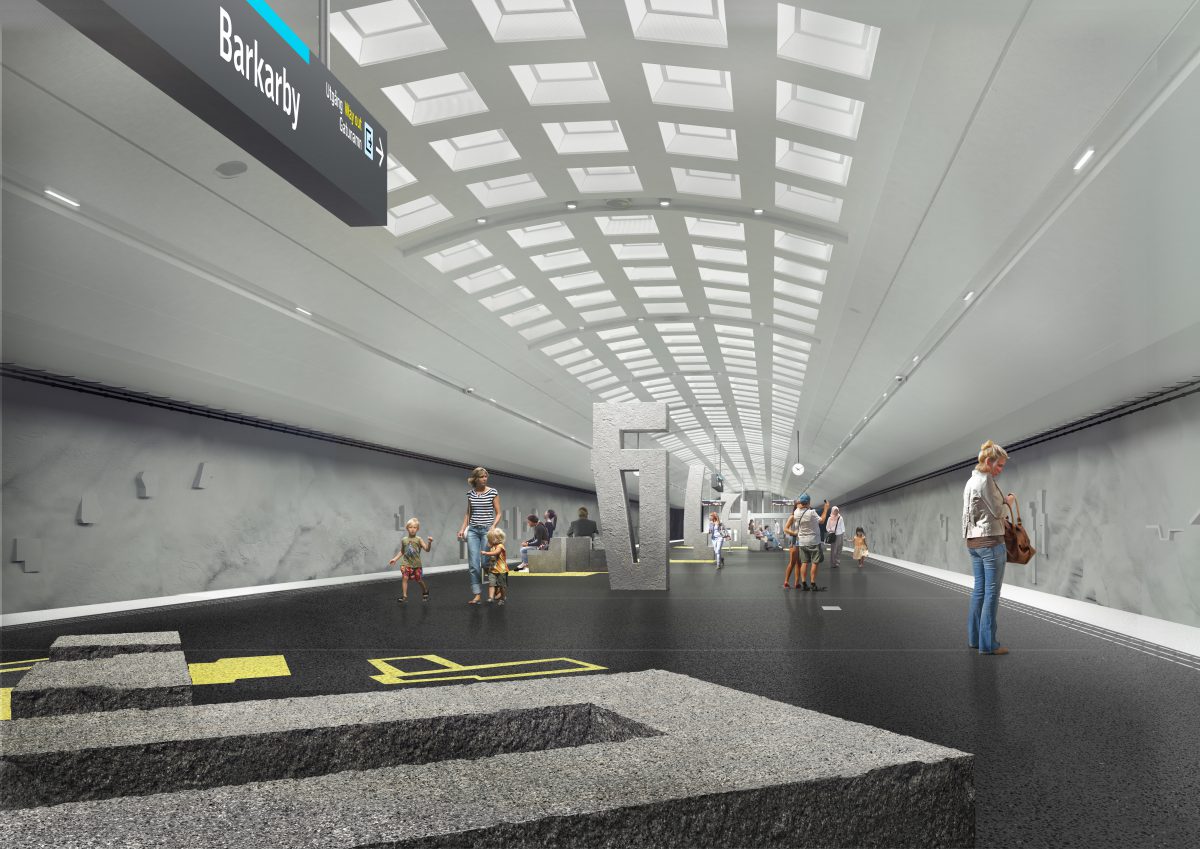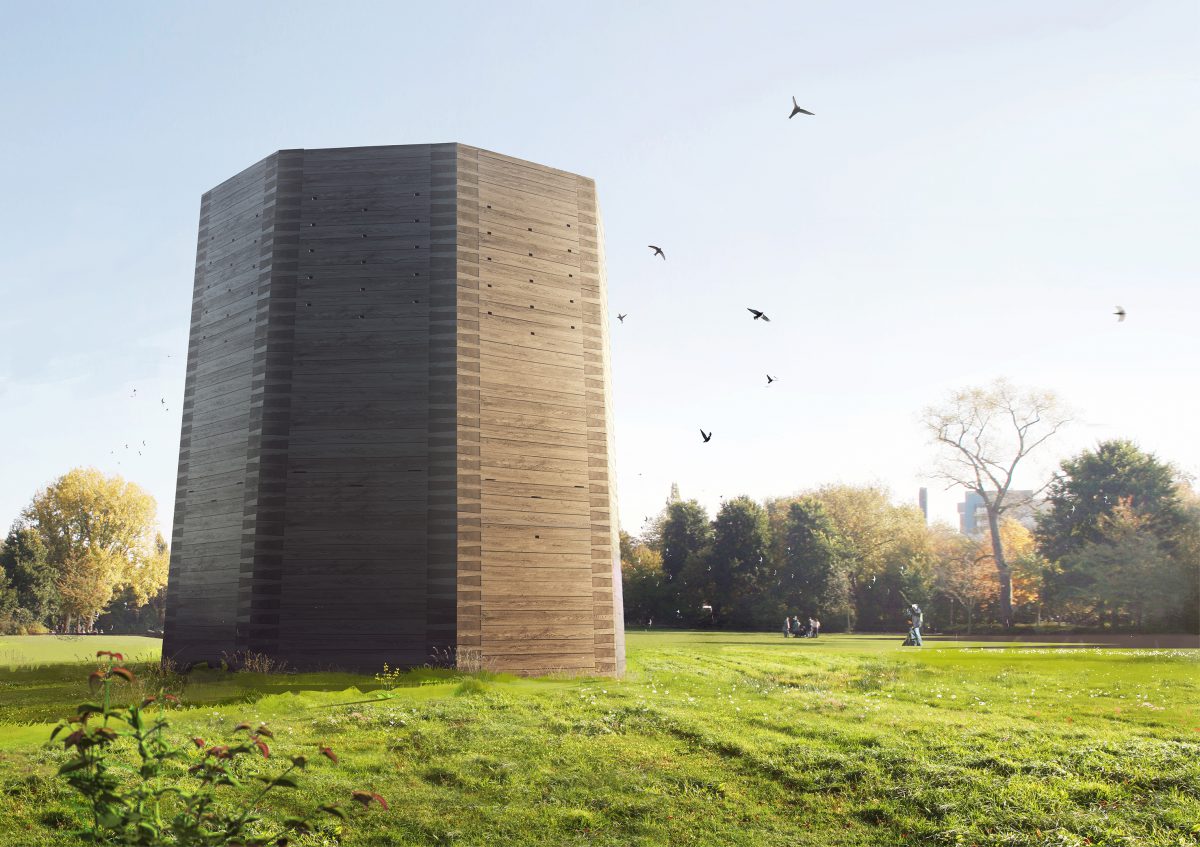Blue line metro extension in Stockholm rated ‘Excellent’
Overview
The new metro extension was built with minimal impact to the environment and with care for concerns like groundwater. The client and project team was kept highly engaged throughout, thanks in part to the BREEAM Infrastructure process. It used innovative elements, like integrating bird nests in the ventilation tower.
Background
Stockholm is one of the fastest growing metropolitan regions in Europe. The population is increasing by 35,000 a year which puts higher demands on more housing and better public transportation.
Challenges
Already in the 2010 Regional development plan it was stated that the Stockholm region was very “one-cored” and needed to become more “multi-cored” to counteract the spread of buildings and activities from the central.
One of 8 prioritised cores were Barkarby-Jakobsberg and in the 2013 Stockholm negotiations it was decided to extend the current metro from Akalla to Barkarby with 4 km tracks and two new stations, one in the upcoming new town Barkarbystaden.
The metro is located below ground and will have entrances in ground level, mostly integrated in new buildings (to be built outside the project scope) and one separate entrance hall designed with meadow roof.
All platforms/ticket halls are part of the Stockholm Metro Art exhibition and have different features, where for example one of the platforms will have screens showing clouds and sky to resemblance the old military airport that was located above.
One ventilation tower is placed in a green field. This has been made in wood with integrated bird nests.
Environmental concerns
There are two main challenges from an environmental point of view.
To perform the tunnelling with a minimum of impact on the groundwater levels and a minimum of noise disturbances for the people who lives and works nearby. Extensive grouting is required to prevent impact on groundwater levels. Infiltration wells are also prepared to refill the waterbeds.
To limit noise disturbances, noisy work will be carried out at special times. Furthermore, people who are permanently exposed to high noise levels will be offered temporary housing. Extensive information efforts will also be carried out to increase people’s acceptance to noisy work.

Solutions
Project management
The client compiled guideline documents for how all metro extensions projects should work with sustainability. These were:
Instruction for resource efficiency and limited climate impact
Instruction for socially sustainable construction stage
Instruction for product and material choices
Instruction for CEEQUAL management
Instruction for carbon footprint calculations
Strategy for sustainability in the projects
To make it fun and inspiring to work with all these strategies, the project team worked with a gamification strategy where all designers from different aspects competed against each other, scoring points for working with sustainability. This led to a very engaged project team.
They held monthly workshops which were open to everyone who wanted to work focused on their sustainability targets, instead of mandatory, separate meetings with each design leader.
People and communitiesIn the project the client has from early planning stage throughout the design worked with several activities to involve the community. There have been several public meetings, open houses, digital surveys, attitude surveys etc. When it comes to design one of the entrance halls has been designed with a meadow roof and the ventilation tower has been designed with integrated bird nests which enhance the recreational value. The platforms have also been designed as a part of the Stockholm Metro art exhibition which also make them feel safer for different groups. A separate Social Impact Assessment has been conducted as well as studies about child perspective in the construction stage and Traffic Safety Analysis. Land use and landscapePrior to choosing the location of the metro a location study was conducted, both for location of stations and location of the tracks. The aspects that were included in the study were:
The project is located partly in an urban area and partly on a field. The western part of the field will be developed to an urban area including the metro’s entrances, while the eastern part of the field, close to the creek, will be preserved as a nature reserve. Since the metro is located below ground with only one separate entrance hall (the rest integrated in buildings to be built) the impact on land use and landscape is relatively small. During the construction stage, most of the areas used for establishment and temporary works were chosen because they were already paved surfaces. There were some contaminations that are being removed through the excavation and there are also some kerosene and PAH:s present that are been remediated on site. Ecology and biodiversityTwo environmental impact assessments and several underlying studies were conducted. A couple of protected species were found nearby the project site:
Stone loach was also found in a nearby creek. However the species were found much further down the creek and stone loach is not protected, only uncommon. Since most part of the project is located below ground, it will have very small impact on the ecology and no protective measures was deemed needed in the EIA:s other than measures to minimise the ground water lowering. To compensate for the small areas that are being built above ground, the roof of the separate entrance hall is a meadow and the ventilation tower is made in wood as a big bird nest. The water environmentProtective measures were taken to prevent a lowering of the ground water due to the tunnelling. Grouting was done regularly during construction and there was also infiltration equipment prepared to keep the ground water levels stable, both during construction and operation. During construction stage there were very high demands of waste water treatment and control measures are in place. Both stormwater and water from the process are undergoing treatment before discharge. During operation there is a permanent water treatment plant in place for the drainage water. Drainage water can be led to infiltration wells and be used as refill groundwater. Since the project is below ground there are very little hard surfaces that lead to runoff and the only separate building will have a green meadow roof that can delay/retain runoff. Stations were fitted with water efficient faucets. Physical resources use and managementTogether with the municipality, the project signed a contract saying that if the municipality put a local rock crushing plant in the area, the project had to transport all their rock there and later re-buy from the same crushing plant to minimise transportation. The crushed material can also be used in the extensive exploitation in the local area. In the project the construction material evaluation system Byggvarubedömningen has been used. The system evaluates specific products in three different levels (avoid, accepted, recommended). The aspects evaluated for each product are among other aspects hazardous chemical components, percentage renewable content, percentage reused material, FSC/PEFC, emissions, percentage renewable energy during manufacturing, packaging method, VOC etc. The project was been designed with a long lifespan (120 years) to minimise waste during construction. Several energy saving designs has been made, such as placing platforms on a little “hill”, LED-lightning and energy efficient escalators/elevators. The historic environmentThere were some areas of archaeological value identified. The project's location was changed to avoid crossing these. Hence there has been little to no impact in the historic environment from the project where it is located in a tunnel below ground. The ventilation tower has been made rounded in wood to better fit in the landscape. The entrances will affect the feeling of the historic environment and landscape in the area, however the future development of the Barkarbystaden will affect it more which is outside the project scope. TransportThe project itself is a transport project made to enable more sustainable transportation’s between Stockholm and Barkarby. There have been transportation policies in place during design stage and we have followed up on them with a transportation survey with results showing that a lot of meetings were made over Skype and that most project members used bike, bus or metro to travel to their offices and between meetings. In the design stage there has also been a separate Traffic Safety Analysis made for the construction stage and the local crushing plant reduces the length of the transportation’s. |

Benefits
The client's aim was to be able to measure the sustainability level between the different metro extension projects and make them use the same framework for their design and provide a good basis for the construction stage. Also since BREEAM Infrastructure was still quite new in Sweden at the time, it was considered to have a marketing value.
Element of this project which demonstrated best practice included:
Project strategy (gamification strategy)
Integrated bird nest in the ventilation tower
Thorough work in early design stage with product choice to avoid hazardous materials.
Extended Metro Administration, Region Stockholm
Elin Ahlstrom, Tyrens
